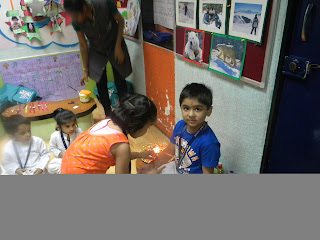DESCRIPTION
The date of Ganesh Chaturthi falls on the fourth day after the new
moon in the Hindu month of Bhadrapada. This is August or September each year.
It's commonly celebrated for the following 11 days, with the biggest spectacle taking
place on the last day called Ananta Chaturdasi. Ganesha the son of Lord Shiva
and Goddess Parvathi, is the Lord of success and the unique destroyer of evils
and obstacles. He is also adored as the God of education, knowledge, wisdom,
wealth and what not! In fact, Ganesha is one among the five prime Hindu deities
(Brahma, Vishnu, Shiva and Durga being the other four). Lord Ganesha is
responsible for propelling mankind towards the eternal path and to remove
obstacles from every human's way.
IMPORTANCE
The festival begins with the
installation of huge elaborately crafted statutes of Ganesha in homes and
podiums, which have been especially constructed and beautifully decorated.
Artisans put months of effort into making the statues. It's forbidden to look at
the moon on this first night as legend had it the moon laughed at Lord Ganesha
when he fell from his vehicle, the rat. Ganesh Chaturthi is an important
festival of Maharashtra, celebrated grandly in other parts of India as well.
The preparation starts one month in advance, with great enthusiasm, to
celebrate this auspicious occasion. The festival starts with the installation
of beautifully sculpted Ganesha idols in homes and mandaps. These idols are
decorated beautifully and show religious themes. The occasion also sees various
cultural events being held every where, in which people participate with
interest. After celebration, the time of farewell comes and the idol of the
beloved God is immersed in water. The celebration ends with the immersion,
accompanied by loud shouts of 'GANAPATI BAPPA MORAYA'.
POEM
POEM
Khusian ho overflow,
Masti kabhi na ho low,
Dosti ka shurur chaya rahe,
Dhan aur shorat ki ho bauchar
Aisa aaye aapke liye
Ganesh Puja Ka Tyohar!




































